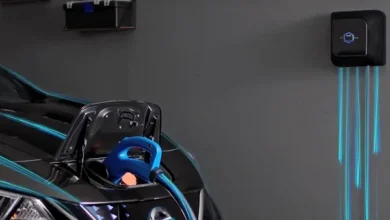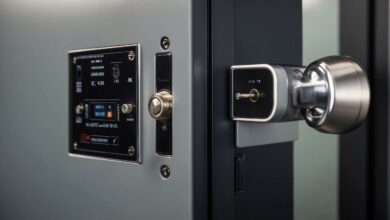Learn All About Coaxial Cables: An All-Inclusive Guide

Coaxial cable assemblies are some of the most widely used cables in the world. They provide electrical transmission when needed and deliver high-frequency signals from point to point. Because of their design, they can do this with extremely limited signal loss. They touch our lives in many different ways. Many times, we are unaware just how much coaxial cable there is around us.
A few applications where coaxial cable assemblies are found are listed below:
- Phone Lines
- Internet
- Cell Phone Boosters
- Cable TV
What Are the Components of a Coaxial Cable?
Regardless of whether the cable is manufactured by coaxial cable manufacturers in USA or other areas of the world, they all have the same components. The man components are listed below:
- Core
- Shield
- Dielectric Insulator
- Jacket – Rubber Coated Wrapping
In the core of the coaxial cable a single copper or copper-coated steel wire can be found. It is the component which transmits the high-frequency signals. The metal shield is comprised of woven copper or aluminum in most cases. This is what shields the cable from any electromagnetic interference. It wraps around the insulator which is made of plastic and surrounds the core wire.
Because the signal is well-protected, the signal can be sent across long distances without interference or signal loss. This signal can be converted into audio, images, Wi-Fi, or an amplified cell signal.
What are Some of the Real-World Applications of Coaxial Cables
Most people are surprised by how many areas of their life are touched by coaxial cables. Whether it is by custom RF cable assemblies transmitting radio signals or a coaxial cable connector assembly to transmit close circuit television signals they are everywhere.
Listed below are some of the most common applications for coaxial cable:
- Cable TV
- Cable Internet
- Signal Boosters
- Ham Radio
- Basic RF Systems
Cable TV
With traditional cable television, coaxial cable is utilized to transmit the data and video from the cable provider to your television set. For those situations warranting a digital converter box they also are used to connect the television set to the box.
Cable Internet
With cable Internet, the cable service provider utilizes the copper-based cable to pipe the signal into the router or cable modem inside your house. Then customers in the home can either connect with a wired connection or a Wi-Fi connection for Internet access.
Signal Boosters
In situations where a weak signal is limiting access, a signal booster is used. This is done by having an external antenna and an indoor antenna. Coaxial cables are utilized to connect all three components and provide a stronger, more reliable signal.
Ham Radio
The Internet before Internet, Ham Radio allows people to communicate over the airwaves. In some instances, this communication can stretch over thousands of miles. With coaxial cable attached to the antenna, the signal of the Ham Radio is greatly increased.
Basic RF Systems
RF stands for radio frequency. That type of signal is generated by an alternating current transmits through a conductor. Coaxial cables can be used to carry radio frequency signals efficiently.
Coaxial Cable Connectors
While we have discussed a great deal about coaxial cabling, we have yet to touch on the connectors available. These are used to join two sections of coaxial cables together, as well as, to attach cabling to a device. The connectors typically use high-connectivity materials, such as gold or silver which are tarnish resistant. The type of connector used will depend on the application.
Below are the different types of connectors:
- SMA Connector
- SMB Connector
- F-Type Connector
- N-Type Connector
- FME Connector
- TNC Connector
- UHF Connector
Coaxial Cable Advantages
With any cabling solution there are decided advantages. Some of the advantages of coaxial cable are listed below:
- Durability
- Electromagnetic Interference Resistance
- Low Cost
- Easy to Use
- Easy to Customize and Expand
Coaxial Cable Disadvantages
Just like above, with any cabling solution, there can be disadvantages to using it. Listed below are the most frequently cited disadvantages of using coaxial cable.
- It Can Be Bulky
- It Is an Eyesore When in Plain Sight
- Expensive for Long Cabling Runs
- Expensive to be Professionally Installed
- Can be Fragile in Certain Applications
- Failure in Any Stretch of Cabling Can Cause the Entire Network to go Down
- Can Only Transmit at a Maximum Rate of 100Mbps
What Makes Coaxial Cable Fail
While coaxial cable is designed to last for years and years, there are certain circumstances in which the cabling can be damaged.
Listed below are some types of damage and their causes:
- Heat Damage
- Physical Damage
- Water Damage
- Connector Damage
Heat damage is typically a result of continued exposure to high temperatures. The plastic wrapper inside the cable can actually melt which will leave the inner components unprotected and likely damaged.
Physical damage can be caused by a drastic bend in the cabling or when it is driven over and continually stepped on.
If water manages to infiltrate the cabling, the moisture will damage the electrical components and minimize the efficiency of the transmission.
If a connector corrodes or breaks, then the cable cannot efficiently transmit the signal required.
In Conclusion
It is important to choose the appropriate coaxial cable and connector for your given application. If chosen correctly, the coaxial cabling can last for decades. For the best coaxial cable manufacturers in USA, look no further than Star Engineering. Reach out to us today.



